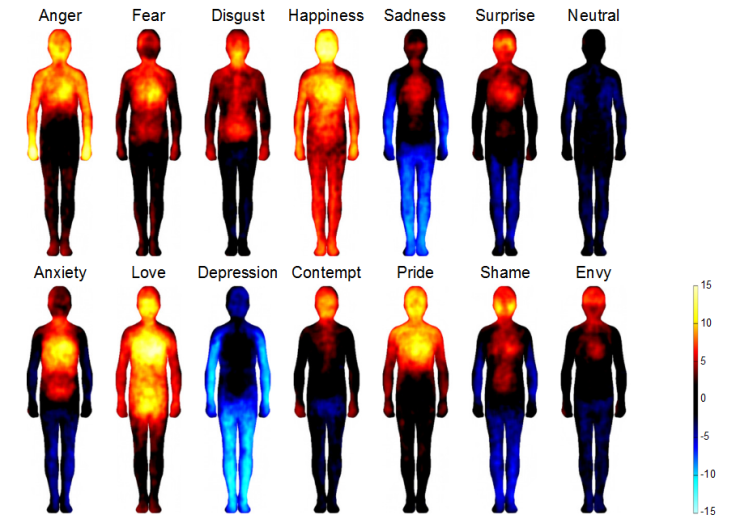Emotions Mapped In The Human Body, ‘Most Accurate’ Visualization Of Emotion-Related Bodily Sensations [PHOTO]

In a new study, Finnish researchers found a way to map the way feelings affect the human body.
The findings, published in in the Proceedings of the National Academies of Sciences, reveals how emotions are more than mental states. Using data collected from 773 participants, researchers connected emotions with which areas in the body felt increasing or decreasing activity.
Participants were given computer-modeled body silhouettes next to emotional words, stories, movies, or facial expressions. They were asked to bold the bodily regions where they felt activity using different colors – red and yellow for intensity and shades of blue for dullness.
The 14 different emotions including anger, fear, love and depression show which areas of the body experience the strongest emotions. Researchers found each emotion was expressed differently in the body – and that among different West European and East Asian cultures the reactions remained the same.
“These maps constitute the most accurate description available to date of subjective emotion-related bodily sensations,” researchers wrote in the study. “Our data highlight that consistent patterns of bodily sensations are associated with each of the six basic emotions, and that these sensations are represented in a categorical manner in the body.”
Researchers were surprised to discover that unlike other emotions that can be pinpointed to specific parts of the body – such as feelings in the throat region for disgust –happiness was felt all over the body. Meanwhile, feelings of anger and fear brought strong emotions to the chest, sadness and depression showed dullness in the legs and feet.
The findings are considered a major step forward in understanding how emotions work in the human body. The result from the study could advance the study of emotional disorders and the tools to diagnose them. For instance, mapping emotions could help develop biomarkers for different disorders and play a role in treating – like smile therapy for those with symptoms of anxiety,
© Copyright IBTimes 2025. All rights reserved.





















